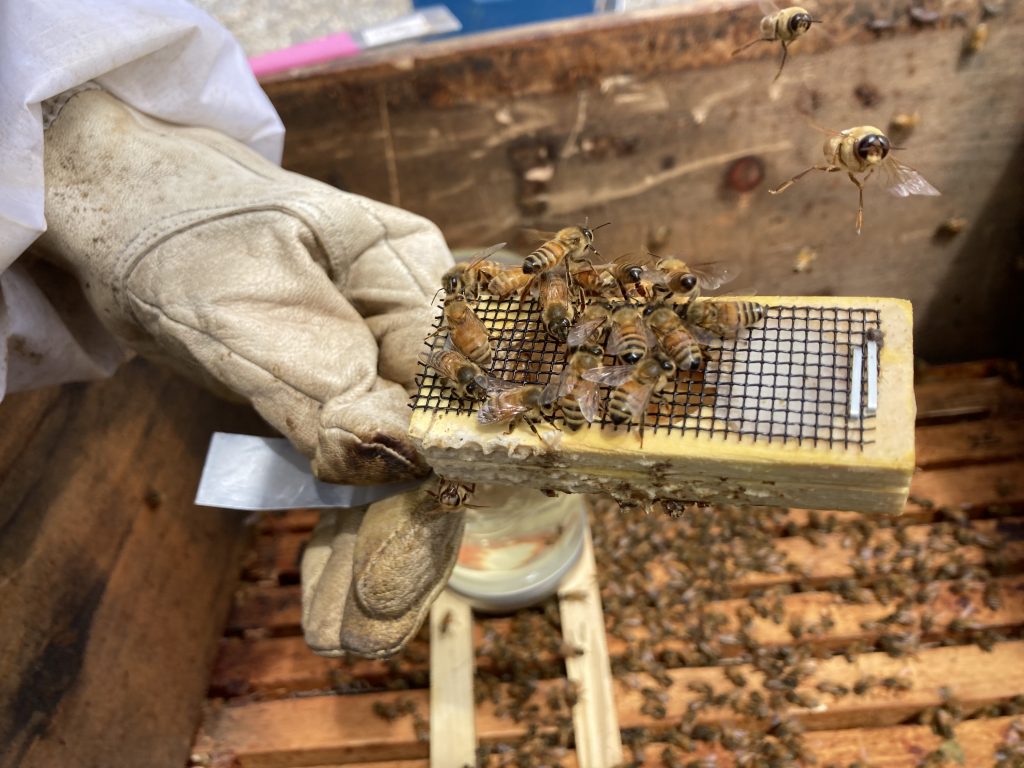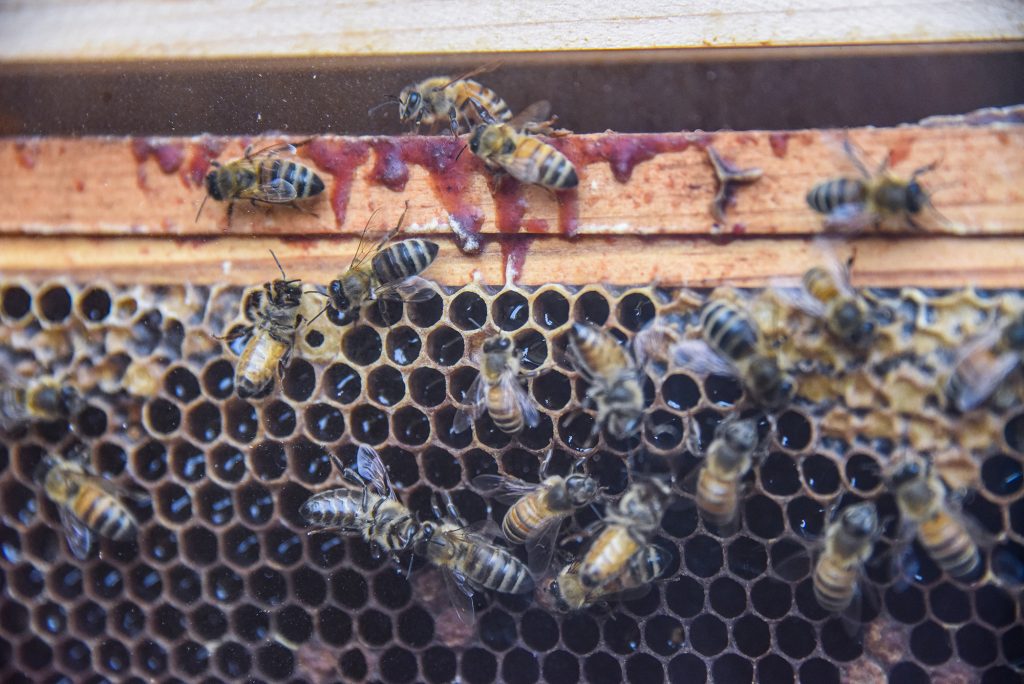Did you know that Labor Day is when beekeepers begin extracting their fall honey?
Let’s start from the beginning with how bees make honey. It all begins at the flower—flowers produce nectar as a reward for the pollinating bees. Forager bees bop around the garden from flower to flower, collecting nectar and pollen before heading back to the hive. The nectar collected is stored in the nectar sac, a special spot in a worker bee’s body where enzymes are deposited and water is extracted. Another worker comes and collects the nectar from the forager and deposits the nectar into the comb. She then extracts and deposits the nectar over and over, dehydrating it little by little with each cycle.
The process of passing the nectar and repeatedly drawing it in and out of the comb will continue until the nectar has around a 20% moisture content and is finally put back into the comb as sweet, thick, honey. The final step is for the bee to cap the honey with wax to protect it before moving on and making more!
This is when the beekeeper will come in and decide when to extract honey if possible. If the hive is a first-year colony, there typically won’t be enough to both share with the beekeeper and survive the winter. Bees tend to make more honey than they can eat, so if the hive has enough to spare, we will take some for ourselves! At the Gardens, we hope to leave all of our hives with plenty of honey to help ensure winter survival.

We decide which hives we would like to extract from when their honey boxes, or “supers,” are 80% full of capped honey. Beneath those selected boxes we install a device called a “bee excluder.” This is a wooden cover with a little maze inside; it allows bees out but it’s too confusing of a route to let them back in (temporarily). Once the bees have left the honey supers, it’s time for extraction—we’ll take the honey boxes off, instantly putting them under a cover to prevent honey robbing from other hives.
Now it’s time for extraction! There are a variety of tools we can use to remove the wax capping from the honey comb. We typically use a serrated knife and remove the capping by slicing it off the top. “Comb picks” or hot knives are also commonly used for this task. A comb pick is used to remove small sections not easily reached with a knife and a hot knife slices the wax a bit more smoothly without losing excess honey. These tools let the honey come out of the cells without completely destroying the comb; our goal is to collect as much honey as possible and keep the wax separate for other fun crafts or for the bees to reuse.

Once all the capping has been removed, the next step is the actual extraction. Honey extractors come in a variety of sizes, but typically contain a metal cylinder with racks to hold the frames. They can either be motorized or use a hand crank to spin the frames and fling the honey out of the comb. The honey slides down the sides and collects at the bottom of the cylinder where a spout allows the honey to drain through a strainer and into a bucket. The honey is strained a few times to remove any excess wax or insect parts. The final step is pouring the honey into jars and then into our Gardenshop or a pantry it goes!
Honey has a variety of unique traits. Too sweet to host bacteria, it is anti-microbial and won’t spoil. If your honey has crystallized, it has merely become the solid form of sugar and can be reversed by heating the honey back into a liquid state. Local honey is great for seasonal allergy resistance; bees are constantly getting covered in local pollen while collecting nectar and some of that pollen gets mixed into the honey. By eating local honey, you expose your body to these allergens, helping it to acclimate and resist, like a vaccine for local plant allergies!
And of course, honey is delicious. The flavor can vary greatly, anywhere from light, sweet, floral to dark, rich, molasses! It all depends on the season, what is blooming when the bees collect nectar, and what cultivated crops are in the area.
— Jade, Beekeeping Intern


